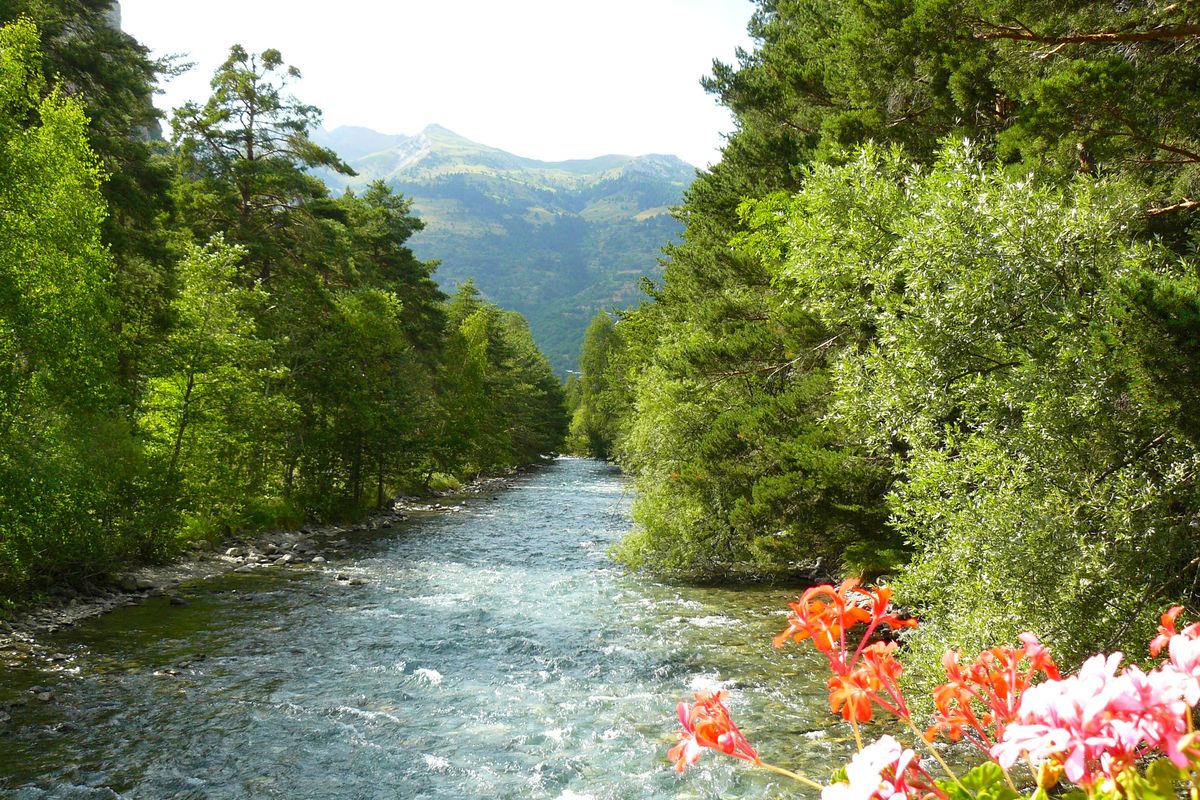
Biaysse P2 : from Freissinières (city hall) to Pallon (campsite)
Description
There is no major difficulty along this section, which can easily be read from upstream.
Ideal for beginners who would like to be initiated to white waters kayaking on mountain rivers. The Biaysse offers incredible panoramic views over the Freissinières valley, as well as over the breathtaking Queyras mountain range.
At the start of the season, with a stronger water flow, the section can be classed III+.
At Pallon, there is an hydroelectric dam right after the bridge. It is therefore mandatory to disembark before the bridge and the campsite.
- Towns crossed : Freissinières
Gear
Helmet and life jacket are mandatory
Inflatable kayaks are not suitable and strongly advised against
Recommandations
If the Pallon dam isn't full, the water flow can be very strong when approaching the dam
Careful with floods after a storm
Careful with logjams, especially at the beginning of the season
Canyoning is authorized between 8:30 and 17:00 only, by municipal by-law
Please take your trash with you
Attention : Experience is required in order to navigate these rivers without professional supervision. This information is provided for general guidance. Checking weather reports, water levels, flow rates and conditions before embarking is under your responsability. The tourism office and the national park will not be held responsable in case of an accident.
If you have doubts, please ask a professional. Kayak schools, instructors and renting shops of the valley are here to help you.
Mountain Rescue : dial 112
Weather report
Water levels at l’Argentière : https://www.rdbrmc.com/hydroreel2/station.php?codestation=1125
20 points of interest
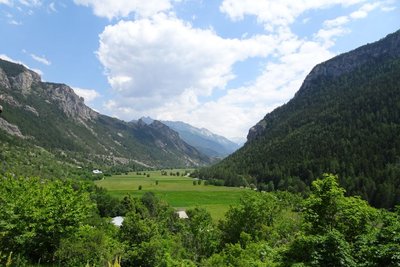
La vallée de Freissinières - Office de tourisme Pays des Écrins  History
HistoryThe Freissinières valley
The valley was created as the result of glacial overdeepening, that is to say, when the glacier came to a halt against the Pallon hard rock bar, it created a depression. When the glaciers retreated, a lake was left behind this rock bar and was gradually filled up by alluvial deposits. From a historical point of view, the Protestant pastor Félix Neff fundamentally altered life in the valley in 1826 by founding a training college for primary school teachers, developing irrigation processes and teaching new crop growing methods, among other things…
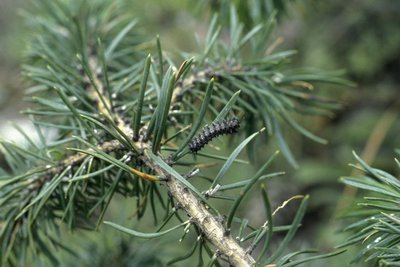
Aiguilles de pin sylvestre - Christian Baïsset - Parc national des Écrins  Fauna
FaunaThe black pine
The black pine did not arrive here of its own accord. It was introduced by the National Forestry Agency and was planted to stabilise eroded mountain areas. It can be identified by its long needles which are grouped in pairs and by its large cones.
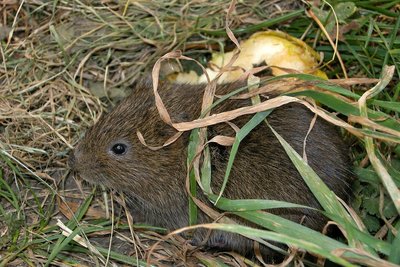
Un campagnol amphibie - Damien Combrisson - Parc national des Écrins  Fauna
FaunaThe southern water vole
Flattened paths through the reeds, and holes 6 to 7 cm in diameter... the southern water vole has been here! This large rodent with dark brown fur on its back digs its burrow in the banks of the stream. This species, which lives close to water, causes no damage to crops. Not a prolific breeder, its numbers are low and it is threatened with extinction.

Goodyère rampante - Marie-Geneviève Nicolas - Parc national des Écrins  Flora
FloraThe creeping lady’s-tress
This inconspicuous little orchid grows on moss, in the undergrowth of the pine forest. Growing at the base of the stem, its leaves are oval and pointed, with a network of veins. The upright stem only bears a few scales. Covered in a fine down, the white flowers are arranged in the form of a spiral spike, facing the same way. A little gem that is worth keeping an eye out for!
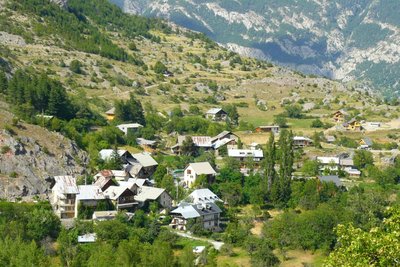
Hameau de Pallon - Office de tourisme Pays des Écrins  Geology and geography
Geology and geographyA Medieval tsunami?
Pallon marks the entrance to the ancient glacial valley of Freissinières, enclosed behind a bar of hard rock. As they melted, the glaciers left behind a lake, trapped by this bar. It is said that this natural dam has been breached on numerous occasions. In the Middle Ages, suddenly released into the Gourfouran gorge, the water is said to have laid ruin to the village of Rame, standing on the plain.
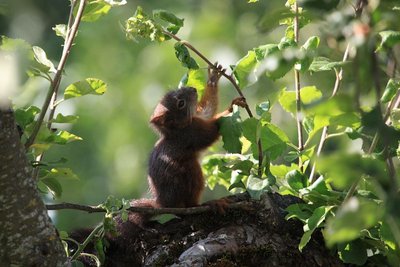
Ecureuil roux - Marc Corail - Parc national des Écrins  Fauna
FaunaThe red squirrel
Elegant and alert, a squirrel crosses the track, followed by its long feathery tail. Red? This one is dark brown. In the mountains this rodent has adopted a “solar panel” strategy, on the principle that dark colours absorb the heat more efficiently. It is active during the day and does not hibernate, although it does minimise its activity on days when the weather is bad. It is a protected species.
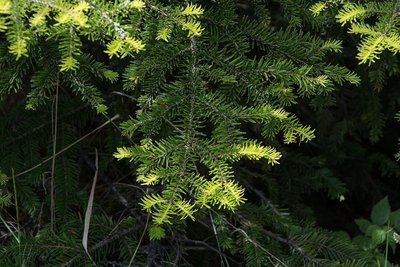
Un sapin pectiné - Mireille Coulon - Parc national des Écrins  Flora
FloraThe European silver fir
The fir thrives on this north-exposed slope, called the ubac. Its needles have two white stripes on their undersides. They are arranged on either side of the boughs, and not all the way around them, which distinguishes it from the spruce. The elongated cones stand upright, rather than hanging downwards. They grow in large number, often mingling with larch trees under whose shade they can grow. By contrast, the larch - the "tree of light" - cannot grow under the cover of fir trees.
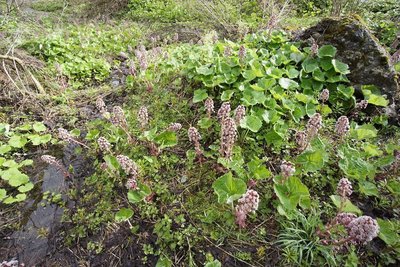
Pétasite hybride - Ludovic Imberdis - Parc national des Écrins  Flora
FloraThe petasites hybridus or butterbur
The ditches on the Freissinières plain are edged by a plant with very broad leaves: the petasites hybridus or butterbur, also called the devil's hat in French. In Ancient Greek, the petasos was a round felt hat. Nobody knows whether the devil wears this hat, but the plant is certainly used as a herbal remedy. Very common in the lowlands, it is quite rare in the Pays des Écrins although other species of petasites do grow at higher altitude.
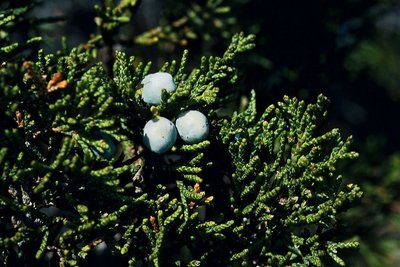
Le genévrier sabine - Bernard Nicollet - Parc national des Écrins  Flora
FloraThe savin juniper
A low spreading shrub, the savin juniper is very common in stony meadows and uncultivated land on warm slopes. Its dark, matte green leaves in the form of small scales, overlap along the branches. So it isn't spiky... but you still need to be cautious as it is very toxic. For seasoning dishes, better to gather the fruits of the common juniper!
L'épipogon sans feuilles - Mireille Coulon - Parc national des Écrins  Flora
FloraCool forest
Here, the drought-sensitive fir has established itself among the larches. This forest harbours treasures such as the very rare ghost orchid and the shield-moss, a unique little moss - also rare - which grows on wood in an advanced state of decomposition and thus signals that the natural cycle of the forest is unimpaired.

Freissinières - Office de tourisme Pays des Écrins  History
HistoryFreissinières
The name Freissinières comes from the old word freissinière meaning "black ash". This municipality, which extends as far as the Col des Terres Blanches and the Col de Freissinières, both of which overlook the Champsaur valley, is made up of thirteen hamlets, although none of them are called Freissinières! Archaeological excavations carried out twenty years ago show that sites at high altitude (such as Faravel) were occupied on a seasonal basis from the retreat of the glaciers 12,000 years ago (Upper Palaeolithic period) and that this occupation continued after that.
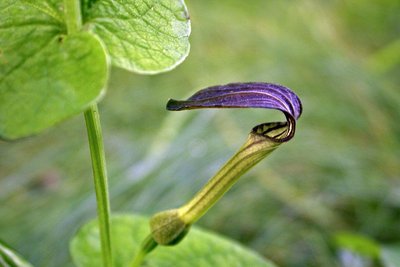
L'aristoloche pistoloche - Damien Combrisson - Parc national des Écrins  Flora
FloraThe Aristolochia pistolochia
The hamlet of Pallon is in a sunny location. Around the village, a curious plant with long brown trumpet-like flowers grows on the edges of the stone piles in the fields and meadows: the aristolochia pistolochia or birthwort. Of Mediterranean affinity, this plant benefits from the hot dry climate here and is virtually at its northern boundary. It is the host plant of the caterpillars of a rare and protected butterfly: the Spanish festoon.
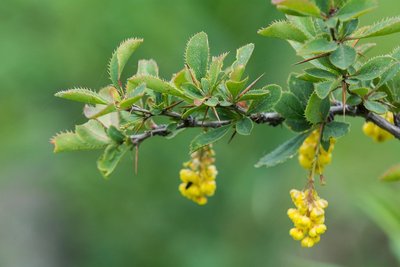
Épine-vinette en fleurs - Mireille Coulon - Parc national des Écrins  Flora
FloraThe common barberry
The common barberry is a bush with long thorns arranged in threes, and with oval serrated leaves. In spring, it produces clusters of yellow flowers, which later develop into red, oval and elongated berries. These tart fruits are edible and can be made into jellies... if you have the patience to gather them! This shrub grows almost everywhere.

Aiguiles de sapin - Parc national des Écrins  Flora
FloraThe fir
The fir thrives on this north-exposed slope, called the ubac. Its needles have two white stripes on their undersides. They are arranged on either side of the boughs, and not all the way around them, which distinguishes it from the spruce. The elongated cones stand upright, rather than hanging downwards. They grow in large number, often mingling with larch trees under whose shade they can grow. By contrast, the larch - the "tree of light" - cannot grow under the cover of fir trees.
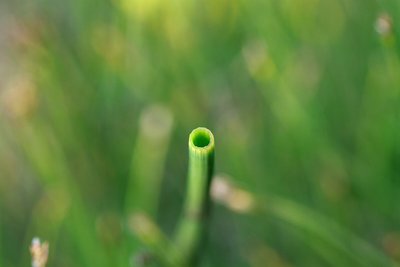
Section de feuille de prêle des rivières - Cédric Dentan - Parc national des Écrins  Flora
FloraThe horsetail
On the banks of a stream, on the edge of a ditch a plant grows which resembles a large bottle brush... or a horse's tail, depending on your imagination. It's the field horsetail, a plant related to ferns. It is known for its medicinal properties because it is rich in silica, a powerful remineraliser for the bones, cartilage and skin. There are several species of horsetail.
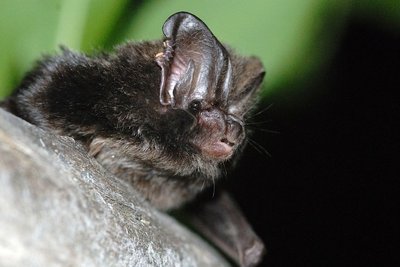
La barbastelle - Mireille Coulon - Parc national des Écrins  Fauna
FaunaThe barbastelle
In the village, birds build their nests in the old walls and bats live in the attics. Some hide behind shutters that are secured open against the walls. The barbastelle is a rare species of bat. Like all other bat species, it is protected. The hamlet of Le Ribes is privileged to be its home in the summer. This small mammal feeds on a large number of insects every night. It «moves house» frequently if it is disturbed or simply as a precaution.
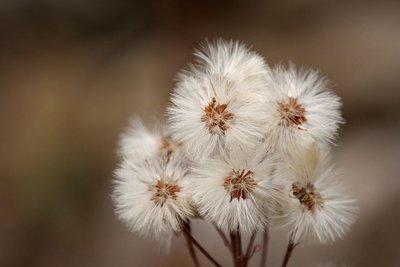
Pétasite hybride en fruit - Mireille Coulon - Parc national des Écrins  Flora
FloraThe petasites hybridus or butterbur
On the banks of the stream there is a plant with very broad leaves: the petasites hybridus or butterbur. In Ancient Greek, the petasos was a round felt hat. Nobody knows whether the devil wears this hat, but the plant is certainly used as a herbal remedy. Common in the lowlands, it is generally quite scarce in the mountains, although other species of petasites do grow at higher altitude. In any event, it makes a great hat!

L'église Sainte Marie-Madeleine - Office de tourisme Pays des Écrins  Vernacular heritage
Vernacular heritageThe church of Sainte Marie-Madeleine
The church of Sainte Marie-Madeleine was built in the seventeenth century. It is thought to be a former Protestant church which escaped destruction in 1684 when Louis XIV was leading an anti-Protestant drive. The Protestant church is then thought to have undergone works to convert it into a Catholic church.
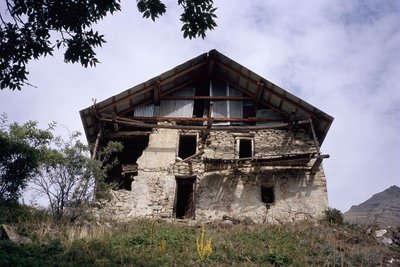
La maison de Felix Neff - Manuel Meester - Parc national des Écrins  History
HistoryFélix Neff
Félix Neff was a Swiss Protestant pastor. He was responsible for the Protestant Revival in the Freissinières valley in the seventeenth century. He also set up the first education college for primary school teachers in France, in Dormillouse in 1826. He was also behind new irrigation and house-building techniques, developments which improved the everyday lives of the local people.
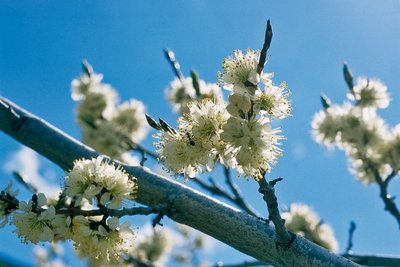
Prunier de Briançon - Bernard Nicollet - Parc national des Écrins  Flora
FloraHuile de marmotte - marmot oil
In times past, the inhabitants of Freissinières used oil for cooking and lighting. Walnut or almond oil was difficult to produce at this high altitude. The Briançon plum tree or marmottier, however, can withstand the mountain conditions, and the yellow fruits of this tree contain kernels. These kernels were pressed in mills to produce an oil with medicinal virtues: marmot oil. .
